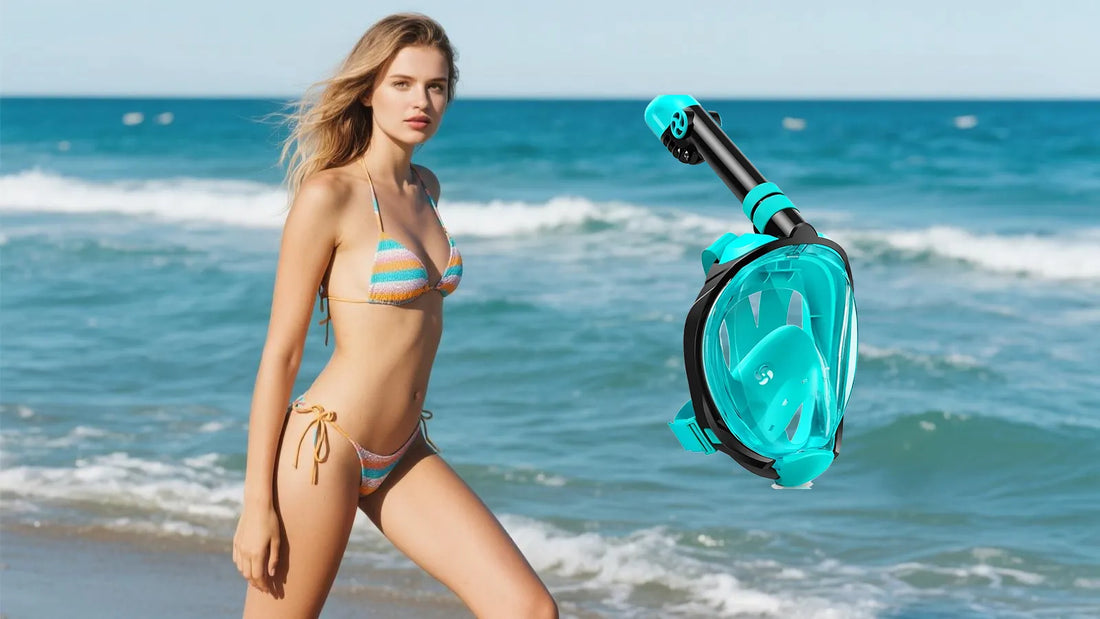Scuba diving is an exhilarating activity that allows you to explore the underwater world, but it does require a significant investment in equipment. Whether you're a beginner or an experienced diver, understanding the costs involved can help you make informed decisions and budget effectively. This guide breaks down the expenses associated with scuba diving gear, offering insights into what you need and how much you can expect to spend.
Essential Scuba Diving Equipment
Before diving into the costs, it's important to know the essential equipment required for scuba diving. These items are crucial for your safety and comfort underwater:
- Mask
- Snorkel
- Fins
- Wetsuit or Drysuit
- Buoyancy Control Device (BCD)
- Regulator
- Tank
- Weight System
Cost Breakdown of Essential Gear
Let's delve into the costs of each essential piece of equipment:
Mask
A good-quality mask is vital for clear vision underwater. Prices typically range from $30 to $100, depending on the features and brand. Look for a mask that fits well and provides a comfortable seal.
Snorkel
While not always necessary for experienced divers, a snorkel is useful for surface swimming. Basic snorkels cost between $20 and $50, while more advanced models with purge valves can go up to $100.
Fins
Fins help you move efficiently through the water. Entry-level fins start at around $50, but high-performance fins can cost up to $200. Consider the type of diving you'll be doing when choosing fins.
Wetsuit or Drysuit
The choice between a wetsuit and drysuit depends on the water temperature. Wetsuits range from $100 to $500, while drysuits, which are more suitable for cold water, can cost between $500 and $1,500.
Buoyancy Control Device (BCD)
A BCD helps you maintain neutral buoyancy underwater. Prices vary widely, from $200 for basic models to $1,000 for advanced BCDs with additional features.
Regulator
The regulator is a critical piece of equipment that delivers air from the tank to your mouth. Expect to pay between $200 and $800, depending on the quality and features.
Tank
Scuba tanks are typically rented rather than purchased, but if you decide to buy one, prices range from $200 to $500. Remember to factor in the cost of regular inspections and maintenance.
Weight System
Weights help you achieve the right buoyancy. A basic weight system costs around $50 to $100, but prices can vary based on the type and amount of weight needed.
Optional Scuba Diving Equipment
In addition to the essentials, there are several optional items that can enhance your diving experience:
- Dive Computer
- Underwater Camera
- Dive Light
- Dive Knife
- Surface Marker Buoy (SMB)
Cost Breakdown of Optional Gear
Here's a closer look at the costs of optional scuba diving equipment:
Dive Computer
A dive computer tracks your depth, time, and decompression limits. Basic models start at $200, while advanced computers with additional features can cost up to $1,000.
Underwater Camera
Capturing your underwater adventures is a popular choice among divers. Entry-level underwater cameras start at $200, but professional-grade cameras can exceed $1,000.
Dive Light
A dive light is essential for night diving or exploring dark environments. Prices range from $50 for basic models to $300 for high-performance lights.
Dive Knife
A dive knife can be a useful tool for safety and utility. Basic knives cost around $30, while more durable models can go up to $100.
Surface Marker Buoy (SMB)
An SMB is a safety device that helps you signal your location to the surface. Prices typically range from $30 to $100, depending on the size and features.
Additional Costs to Consider
Beyond the equipment, there are other expenses associated with scuba diving:
- Training and Certification
- Travel and Accommodation
- Boat Fees
- Maintenance and Repairs
Training and Certification
If you're new to scuba diving, you'll need to complete a certification course. Costs vary depending on the location and organization, but expect to pay between $300 and $500 for a basic open water certification.
Travel and Accommodation
Scuba diving often involves travel to exotic locations. Budget for flights, accommodation, and meals, which can add significantly to the overall cost of your diving adventures.
Boat Fees
Many dive sites are accessible only by boat, so you'll need to factor in boat fees. These can range from $20 to $100 per dive, depending on the location and duration.
Maintenance and Repairs
Regular maintenance is essential to keep your equipment in good condition. Budget for annual servicing, which can cost between $100 and $300, depending on the amount of gear you own.
Tips for Saving Money on Scuba Diving Equipment
While scuba diving can be expensive, there are ways to save money without compromising on safety or quality:
- Buy Used Equipment
- Rent Gear Initially
- Look for Sales and Discounts
- Invest in Quality Gear
Buy Used Equipment
Purchasing used equipment can be a cost-effective option, especially for beginners. Ensure that the gear is in good condition and has been properly maintained.
Rent Gear Initially
If you're new to scuba diving, consider renting equipment until you're sure you want to invest in your own gear. This allows you to try different types of equipment before making a purchase.
Look for Sales and Discounts
Keep an eye out for sales, discounts, and package deals from reputable retailers. This can help you save money on essential and optional gear.
Invest in Quality Gear
While it may be tempting to opt for cheaper options, investing in high-quality gear can save you money in the long run. Durable equipment is less likely to need frequent repairs or replacements.
Scuba diving is a rewarding activity that opens up a whole new world of exploration. By understanding the costs involved and budgeting wisely, you can enjoy your underwater adventures without breaking the bank. Whether you're just starting out or looking to upgrade your gear, this guide provides the information you need to make informed decisions and get the most out of your diving experience.

